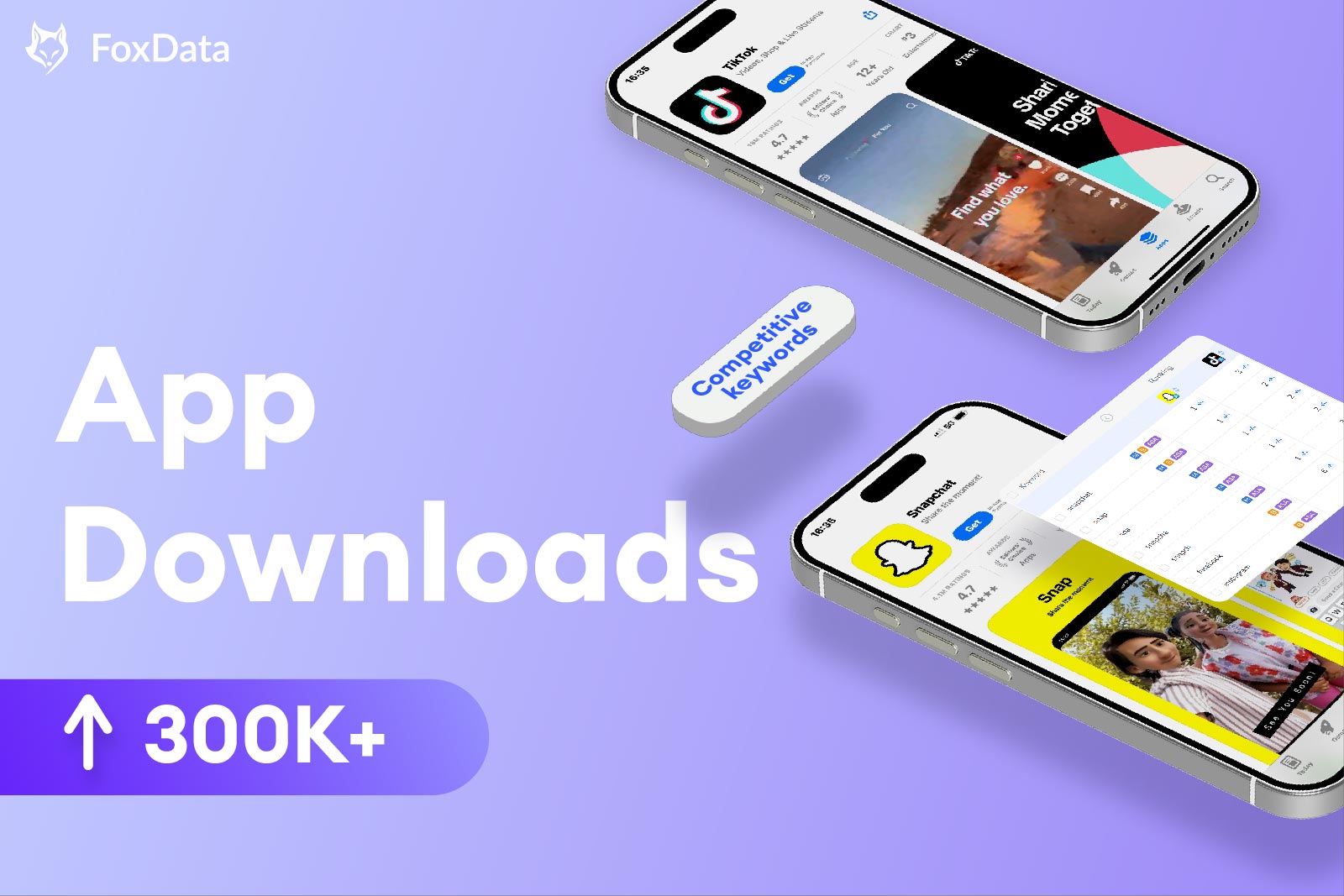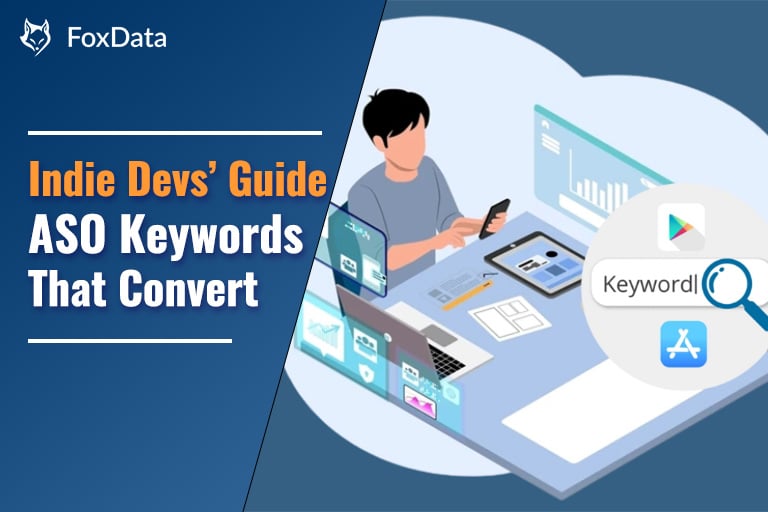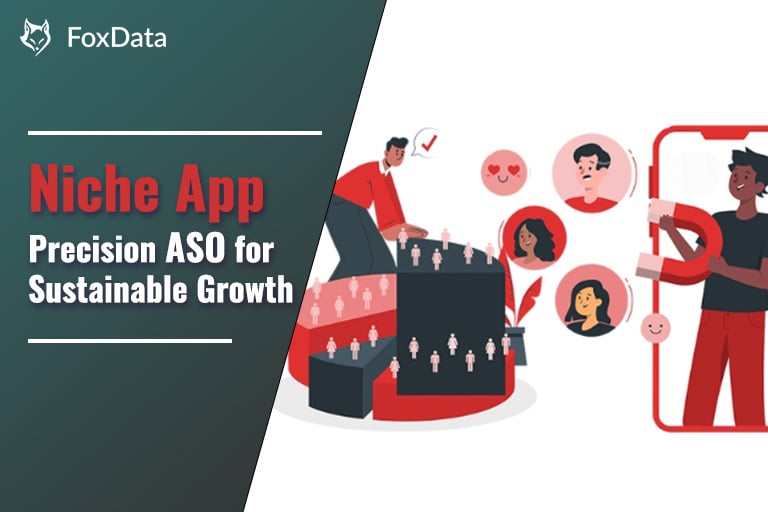ASO vs SEO, Which One is Better for Promoting Your App?

💡 Data Solution for ASO & ASA Agencies
FoxData all-in-one app data analysis agency - helps you streamline store optimization, uncover winning keywords with AI, deliver actionable insights faster, and boost user retention.
ASO vs SEO, which one is better for your business?
In the digital marketplace, where over 5 million apps exist across Android and iOS platforms, standing out is a formidable task. App Store Optimization (ASO) and Search Engine Optimization (SEO) are two vital strategies that can significantly enhance an app's visibility and user acquisition.
While both aim to increase discoverability, they cater to different platforms and have unique methodologies. Next, let's take a look at which you should choose for your business.
Definition: SEO vs ASO
App Store Optimization (ASO)
ASO is the process of optimizing mobile apps to rank higher in an app store's search results. The primary goal of ASO is to increase visibility, which can lead to more downloads of the app. This optimization focuses on keyword relevance, search relevance, and the conversion rate of app store impressions to downloads.
ASO practices may include optimizing app titles, descriptions, and using visuals that encourage users to download.
👉Related Academy: Introduction to ASO
Search Engine Optimization (SEO)
SEO is the practice of increasing both the quality and quantity of website traffic, as well as exposure to your brand, through non-paid (also known as "organic") search engine results. Unlike ASO, SEO involves optimizing for a wide range of search queries that are often more detailed and specific.
SEO strategies encompass both on-page elements (like content creation and keyword optimization) and off-page elements (like link building and social media engagement) to improve a website's standings in search engine results pages (SERPs). The aim is to attract visitors looking for answers, products, or services related to the content on the website.
👉Related Academy: Introduction to SEO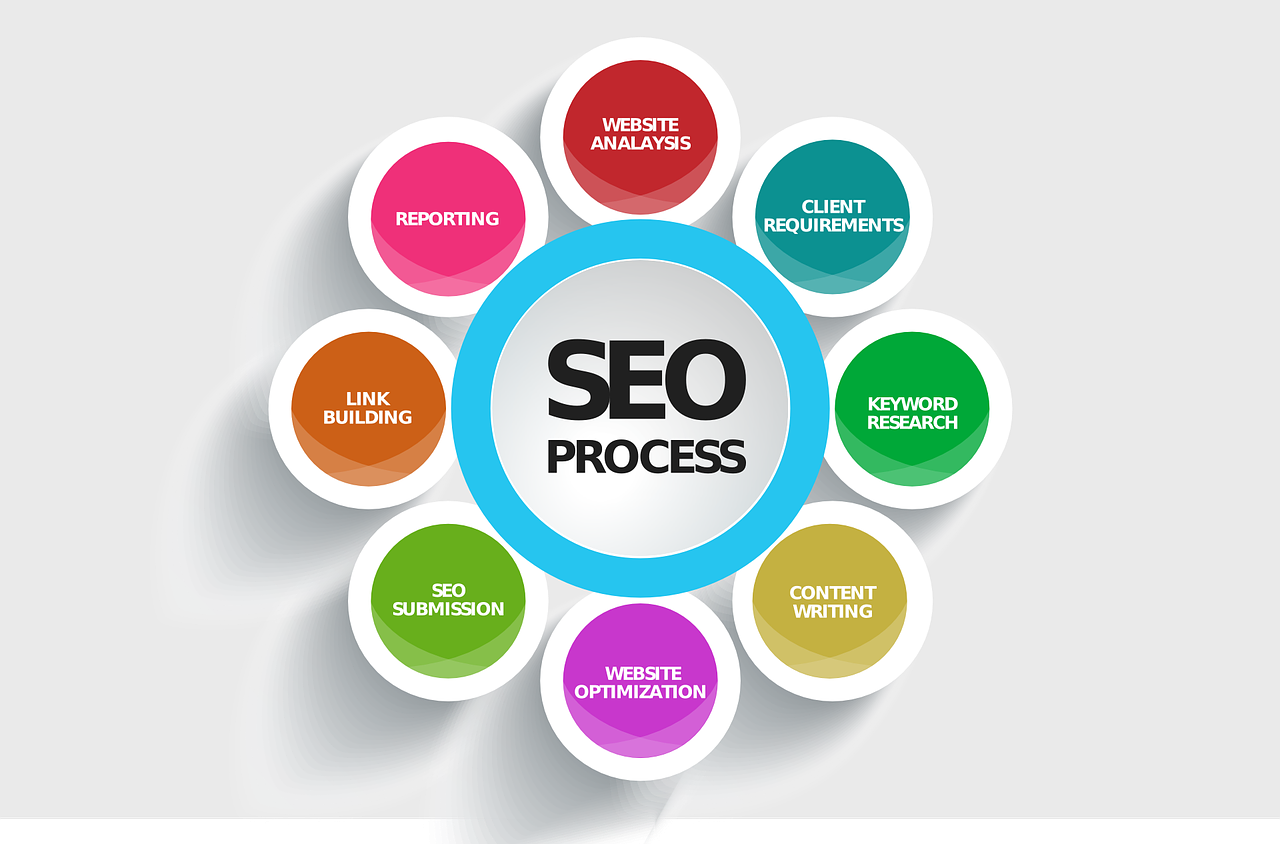
The Ranking Factors: SEO vs ASO
A ranking factor is a criterion used by search engines and app stores to assess and rank content, whether it's a webpage or an app. These factors, influenced by competitive criteria and complex algorithms, play a critical role in determining how prominently your content is displayed in search results or app store listings.
ASO Rankings Factors
|
On-Page
|
Off-Page |
| App Title (Apple/Android) | Total Downloads (Apple/Android) |
| App Subtitle (Apple) | Download Velocity (Apple/Android) |
| Short Description (Android) | Conversion Rate (Apple/Android) |
| Long Description (Android) | Retention and Engagement (Apple/Android) |
| Keyword Density (Android) | Reviews And Ratings (Apple/Android) |
| Keyword Field (Apple) | Crash Rate (Apple/Android) |
| In-app Purchases (Apple) | Backlinks (Android) |
| Publisher Name (Apple/Android) |
👉Related Blog: Factors Affecting App Rankings: App Store vs. Google Play
SEO Ranking Factors
| On-Page | Off-Page |
| Keywords In Title | Page Speed |
| Keywords in Headers | Backlinks |
| Content Quality | Domain Authority |
| Content Relevance | Click-through Rate |
| Content Length & Structure | Bounce Rate |
| Optimized URLs | Time spent on page |
| Meta Tags |
👉Related Blog: Mastering On-Page Optimization: A Quick-Start Guide for Beginners (1)

SEO vs ASO: Similarities
While SEO (Search Engine Optimization) and ASO (App Store Optimization) are tailored to different platforms—search engines for websites and app stores for mobile applications—they share several core objectives and techniques. Here's a closer look at the similarities between SEO and ASO:
Visibility in Search Results
Both SEO and ASO are fundamentally aimed at increasing the visibility of your content—whether it's a website or an app—in their respective search results. The primary goal is to enhance organic traffic by ensuring that your webpage or app appears near the top of search results, whether on Google, Bing, the Apple App Store, or Google Play Store.
- ASO works to attract an audience interested in your app by optimizing for relevant keywords and improving ranking for those terms.
- SEO focuses on positioning your content in front of the right audience by leveraging LSI (Latent Semantic Indexing) keywords, content quality, and search intent.
Both strategies share the ultimate goal of improving search visibility.
Driving Organic Traffic
Organic traffic refers to visitors who find your website or app through unpaid search results. Both SEO and ASO are forms of inbound marketing, which means they attract users naturally, as opposed to outbound marketing strategies like paid advertisements.
- While ASO can benefit from paid promotion within app stores, its effectiveness is limited if the app doesn't also convert organic users.
- SEO and ASO both aim to attract users who are actively searching for solutions or information that your website or app can provide. Engaging these users often leads to higher conversion rates and profitability.
Additionally, incorporating visuals and graphic design can enhance a website's appeal, fostering brand loyalty and further driving organic traffic.
Keyword-Based Strategies
Effective SEO and ASO both rely on thorough keyword research and the strategic placement of these keywords within the content.
- Both strategies involve analyzing user search behavior, gauging the competitive landscape, leveraging long-tail keywords, and identifying relevant search phrases.
- They also focus on non-branded visibility, which means optimizing for generic but intent-driven search terms that can improve search rankings and attract organic traffic.
In conclusion, although SEO and ASO serve different platforms, they share a common foundation: optimizing content to increase visibility, drive organic traffic, and leverage keyword-based strategies to connect with users who are seeking what you have to offer.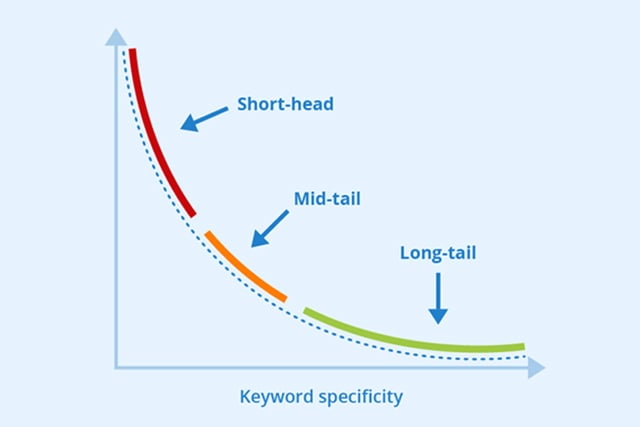
SEO vs ASO: Differences
We understand the ranking factors for both SEO and ASO, as well as their similarities. Now, let's explore their differences and see which one is better for your business.
1. The searcher's Intent
-
SEO: Users enter specific queries or questions into search engines, which then provide results based on relevance, authority, intent, and quality. SEO must cater to a variety of intents, from informational to transactional.
-
ASO: App store users are typically looking to fulfill a specific need by finding and downloading an app. They are not searching for answers to questions but for tools or entertainment that fit their requirements.
The difference in searcher's intent necessitates distinct approaches to optimization, with SEO focusing on a broader content strategy and ASO honing in on app-specific attributes.
2. Visibility Factors
-
Paid Traffic
- SEO: Paid traffic through methods like Google Ads does not directly affect a website's organic search rankings.
-
- ASO: Paid advertisements can lead to an increase in app downloads, and while app stores may detect non-organic traffic, a higher download count can still positively influence ASO rankings.
-
New App/Website Ranking
- SEO: New websites do not receive preferential treatment from search engines and must earn their ranking by fulfilling SEO criteria over time.
-
- ASO: App stores often have sections featuring new apps, giving them a temporary visibility boost that can affect their initial ranking.
-
Ratings and Reviews
- SEO: While customer testimonials can be important for credibility and conversion, they do not directly impact search engine rankings.
-
- ASO: Ratings and reviews are crucial in app stores, as they are a direct indicator of an app's quality and user satisfaction, heavily influencing ASO.
3. Evaluation Time
-
SEO: It can take several months to see the results of SEO changes due to the complexity of search engine algorithms and the competitive nature of the web.
-
ASO: Changes in ASO can often be observed within a shorter time frame, such as a few weeks, allowing for quicker iterations and strategy adjustments.
4. Customization
-
SEO: Websites offer extensive customization options, allowing for a diverse array of content types, designs, and user experiences.
-
ASO: App listings in stores are more limited in terms of customization. You have to work within the confines of the app store's layout and focus on optimizing the app title, description, visuals, and other metadata.
In conclusion, while both SEO and ASO share the goal of increasing visibility and driving organic traffic, they cater to different platforms, user intents, and behaviors. Each requires a unique strategy and understanding of its respective ranking factors, and neither can serve as a direct substitute for the other.
5. KPI
The metrics and KPIs (Key Performance Indicators) employed in SEO and ASO are distinct, reflecting the different user behaviors and optimization strategies for websites and apps. Each set of metrics is tailored to capture the effectiveness of the respective optimization efforts. Below are the metrics commonly used for both SEO and ASO:👉Related Academy: How do KPIs Differ Across Various Digital Marketing Channels?
| SEO (KPI) | ASO (KPI) |
| Link Profile | Keywords Ranking |
| Keywords Ranking | Top Charts Ranking |
| Click-Through-Rate | Featured Tracking |
| Organic Traffic | Conversion Rate to Visit |
| Google Page-Speed | Ratings and Reviews |
| Bounce Rate | Organic Downloads |
| Revenue | Revenue |
| Organic Uplift |
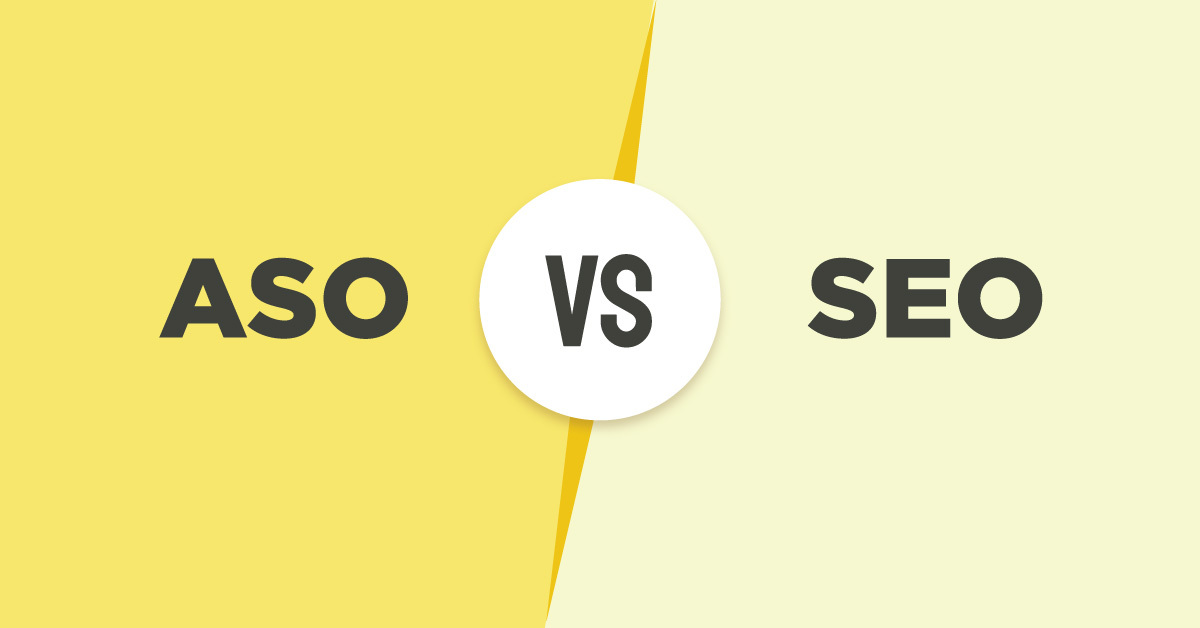
Pros and Cons: ASO vs SEO
To figure out which one is better for your business, we need to consider the pros and cons of each of ASO and SEO.ASO Pros and Cons:
- Pros:
- Tailored for app stores, increasing the likelihood of reaching engaged users.
-
- Can lead to higher conversion rates due to optimized user experience in the app store.
- Cons:
- Limited to app store platforms, which may not suffice for broader digital presence.
-
- Highly competitive, requiring ongoing optimization and monitoring.
SEO Pros and Cons:
- Pros:
- Offers visibility across various search engines, reducing reliance on any single platform.
-
- Attracts diverse traffic sources, enhancing online presence.
- Cons:
- Competitive, with the need for constant efforts to maintain search rankings.
-
- Search algorithms are ever-evolving, demanding continuous adaptation.
👏Expert Tip:In addition to considering the differences between ASO and SEO and their respective drawbacks, there are two other points that businesses need to take into account for their own situation.
- Marketing Budget: Use enterprise resource planning (ERP) systems for a comprehensive view of your finances to allocate budgets effectively.
- Cost Considerations: ASO involves expenses related to app store listing optimization, while SEO may require investment in content creation and technical optimization.

Final Verdict: ASO or SEO?
The decision between ASO and SEO hinges on your specific needs, including budget constraints, digital presence, target audience, and long-term objectives. ASO is ideal for enhancing app visibility within app stores, while SEO caters to a broader online presence. For a robust mobile app marketing strategy, integrating both ASO and SEO may be the most effective approach, ensuring maximum visibility and reach across platforms.
Are you an app developer eager to leverage your SEO knowledge for better ASO results?
Why not take a strategic step and launch a website dedicated to your app? Engage your audience with compelling, informative content to generate organic traffic. Then, skillfully navigate this newfound traffic from your website to your app, potentially escalating your download numbers.


